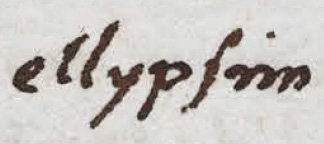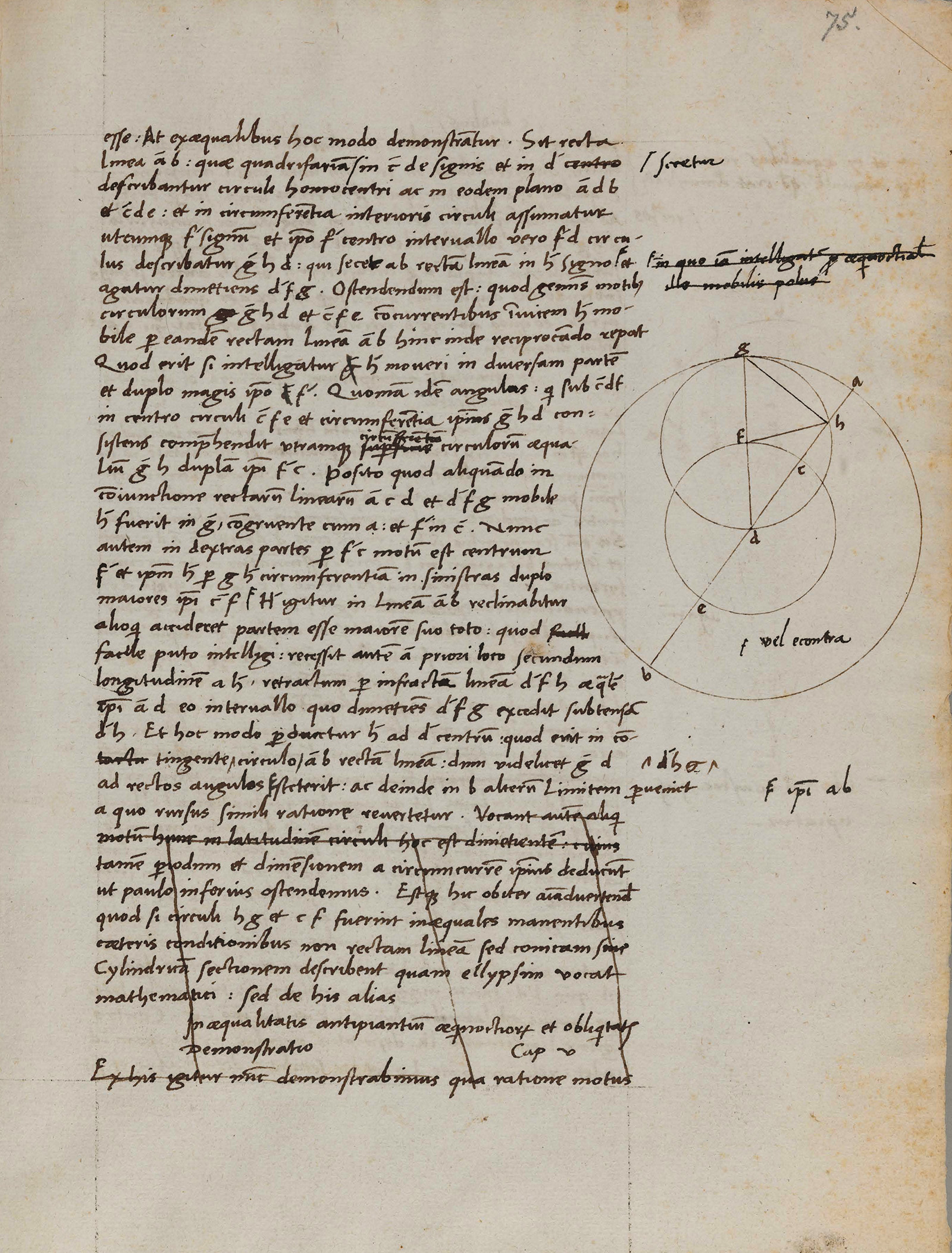Note rayée :
Il est à noter ici en passant, que si les cercles sont inégaux,
ils décriront une section cylindrique,
nommée Ellipse par les mathématiciens.

In the autograph, fol. 75 r , Chapter 4 originally ended with the following passage, which Copernicus subsequently deleted:
It should be noted here in passing that if the circles are unequal, with all the other conditions remaining the same, they will describe, not a straight line, but a conic or cylindric section, called an “ellipse” by the mathematicians.
NICOLAUS COPERNICUS OF TORUN
ON THE REVOLUTIONS OF THE HEAVENLY SPHERES
Translated by
CHARLES GLEN WALLIS
Annapolis, St. John's Bookstore, 1939.


